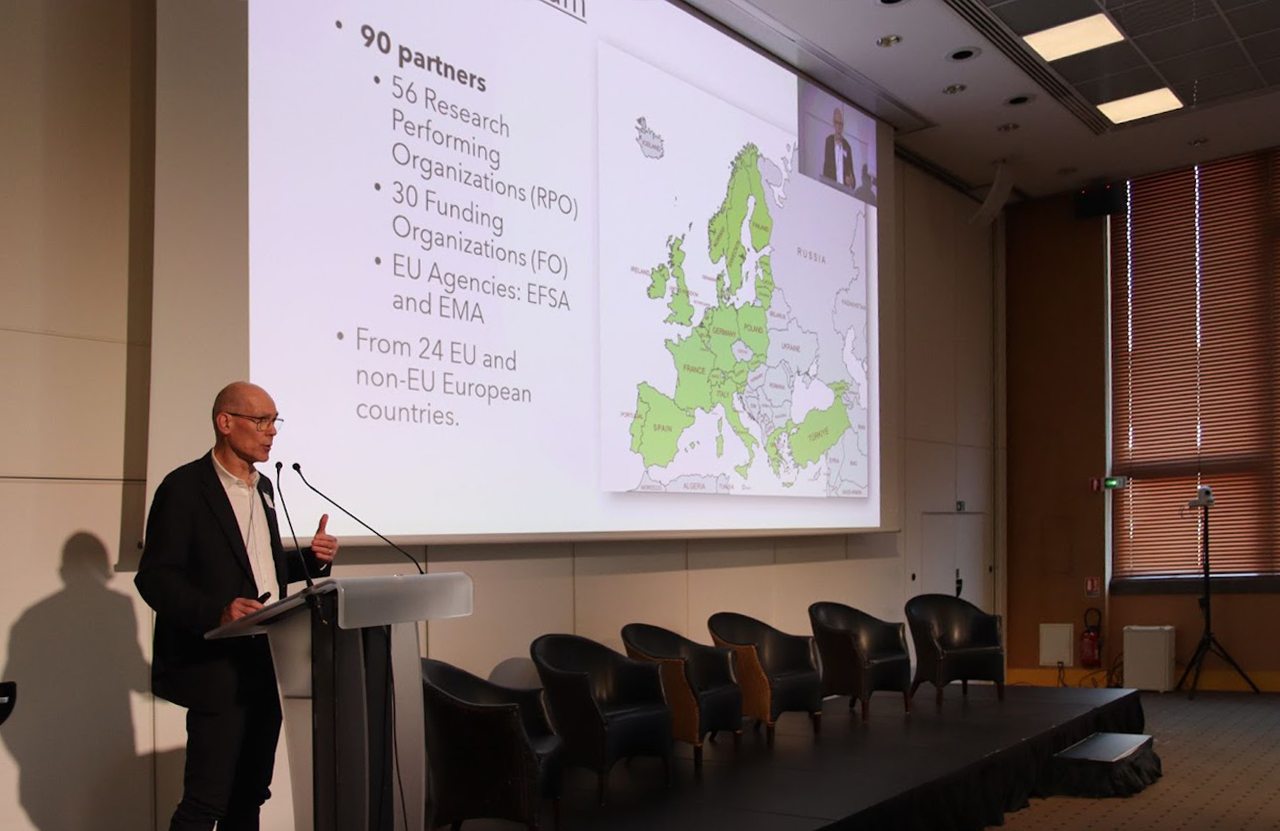
Launch of EU-JAMRAI 2: providing a unified European response to antibiotic resistance
- After the success of the first edition of EU-JAMRAI, 120 organisations from 30 countries, including Navarrabiomed, come together to fight antibiotic-resistant bacteria, broadening the European response to this alarming public health crisis.
The European Commission, political leaders and organisations from 30 countries met in Paris, on 13 February 2024, to launch the second joint action on antimicrobial resistance and healthcare-associated infections (EU-JAMRAI 2). This initiative, in which Navarrabiomed is participating together with a further 20 Spanish organisations, is coordinated by the French body Inserm (National Institute for Health and Medical research). Aim: to combat antimicrobial resistance, which is an important threat to public health responsible for more than 35,000 deaths per year in the European Union (EU)/European Economic Area (EEA), and 1.3 million people worldwide, more effectively.
Based on the success of EU-JAMRAI 1, which was implemented between 2017 and 2021, this follow-on project aims to implement an ambitious work program of “one health” that brings together the EU Member States along with Iceland, Norway and the Ukraine.
Didier Samuel, CEO of Inserm, has stated: “The long-term application of a coordinated approach to “one health” remains a priority over the coming years, as well as for the future. [...] No state is able to act alone against antimicrobial resistance [...]. Cooperation isn’t simply an option: it is the condition for success of the global fight against antimicrobial resistance”.
EU-JAMRAI 2 aims to implement specific actions to monitor, prevent and fight effectively against antibiotic resistance in all fields of human, animal and environmental health, empowering countries to strengthen their well-founded national action plans. The goal is to reduce the risk of exposure of European citizens to antibiotic-resistant bacteria. This implies structuring global vigilance and strengthening infection prevention on a “one health” scale while improving the care of patients with bacterial infections by guaranteeing, for example, access to an effective and proportionate antibiotic therapy.
Together with the Clinical Microbiology Research group at Navarrabiomed, the Hospital Universitario de Navarra is participating in the majority of tasks in the project as an affiliate of the Spanish Drugs Agency (AEMPS), and co-leads the evaluation and comparison of the integration of national vigilance systems in “one health” in Spain.
Vigilance and prevention from a “one health” perspective
EU-JAMRAI 2 is co-funded by the partners involved and the EU4Health program, with a total budget of 62.5 million euros, 50 of which come from the European Commission. This degree of funding underlines the priority assigned by the European Union to the fight against antimicrobial resistance.
Roser Domenech Amado, Director of “one health” at the European Commission’s Directorate General for Health and Food Safety, has stated: “Antimicrobial resistance is the major pandemic of our times. It requires urgent action now, both in Europe and worldwide. In 2023, the European Union agreed recommended objectives in terms of antimicrobial resistance and antimicrobial use, with measures including infection control and prevention, vigilance and follow-up, the promotion of innovation and access, prudent use of antimicrobial and greater public awareness. The 50 million euros provided by the European Commission to JAMRAI 1, which is the highest amount dedicated to the fight against antimicrobial resistance, will help EU countries to make a difference on the ground”.
More than 120 partners from 30 countries, supported by approximately 40 interested parties, are participating actively in this joint action. European organisations such as the ECDC and EFSA, together with global entities such as the WHO, WOAH, OCDE, PNUMA and FAO, are participating to enrich the debate with their experience and guarantee the coherence of the project with existing initiatives.. Moreover, professionals in human, animal and environmental health, as well as patient representatives, are integral components of this joint action.
